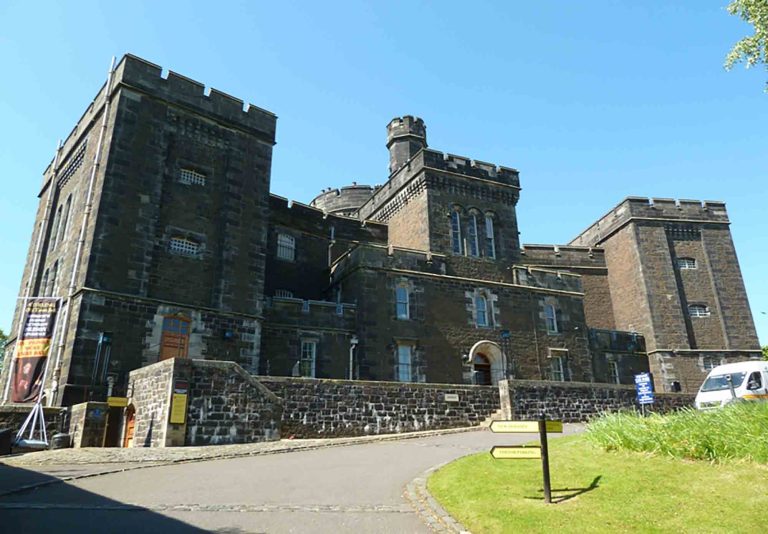I. Introduction: A Passion for Exploration
Exploring History: Reflecting on My Journey to Goa Gajah in East Bali
In August, I found myself drawn to the mystical allure of Goa Gajah in East Bali. With my travel blog as a canvas, I’ve chronicled my deep-seated love for unraveling the world’s marvels, and this particular journey stands as a testament to my fascination with historical treasures.
Unveiling the Local Scenery
As I ventured towards East Bali’s Goa Gajah, I was greeted by Bali’s enchanting landscapes. The region flaunted its lush greenery, serene rice terraces, and traditional Balinese villages. The air exuded an ancient spirituality, setting the stage for the intriguing site I was about to uncover.
Ticket Reservation Methods, Prices, and Operating Hours
Eager to explore Goa Gajah’s historical depths, I opted for the convenience of online ticket reservations through Bali’s official tourism websites. The ticket prices were reasonable, catering to diverse visitors, and the site’s operating hours provided ample time for exploration, from early mornings to evenings, ensuring an immersive experience at different times of the day.
Delving into Historical Narratives: The Story and Background of the Site
The Legend and Origins of Goa Gajah
Goa Gajah, or the Elephant Cave, held a profound place in Bali’s cultural tapestry. Dating back to the 9th century, the site’s mythical origins were intertwined with stories of a sage or royal priest named Kebo Iwa, who purportedly carved the cave for meditation purposes.
Symbolism and Architecture
The intricate carvings at the cave’s entrance left me spellbound, portraying an array of mythological creatures, demons, and guardian spirits. The monumental face carved into the entrance, believed to be an elephant’s head or a demon’s visage, emanated a sense of protection and spiritual significance.
Spiritual and Religious Significance
Beyond its awe-inspiring architecture, Goa Gajah held deep spiritual importance for both Hindu and Buddhist adherents. The cave interiors housed ancient relics, meditation chambers, and a sacred bathing pool, embodying a fusion of two distinct religious beliefs. The gentle echoes of water within the cave created an ambiance inviting contemplation of its spiritual essence.
As I delved into the historical narratives surrounding Goa Gajah, I found myself immersed in a world of ancient tales and cultural richness, appreciating the site’s profound significance as a testament to Bali’s remarkable past.
II. Unveiling the Local Scenery
Embracing Bali’s Breathtaking Landscapes

As I set foot on the mystical island of Bali, I was immediately embraced by its enchanting landscapes, a canvas painted with nature’s finest strokes. Bali’s reputation for stunning beauty was no mere rumor—it unfolded before me in all its glory. Lush greenery carpeted the land, and serene vistas stretched as far as the eye could see, inviting me into a world of natural splendor.
A Journey to East Bali’s Goa Gajah
My path led me towards East Bali, a region adorned with rolling hills, verdant rice terraces, and nestled within, the quaint charm of traditional Balinese villages. The scenery was a masterpiece crafted by nature, each hill rolling gracefully into the next, forming a picturesque panorama that seemed plucked from a dream. As I traversed these lands, I felt a sense of reverence for the harmony between nature and humanity—a harmony that defines the essence of Bali.
Immersed in Spiritual Aura
The air I breathed carried whispers of ancient tales and untold histories, infusing me with a profound sense of spirituality. The atmosphere resonated with a palpable aura, an intangible but unmistakable essence of Bali’s rich heritage. It was as though the very breeze carried fragments of stories passed down through generations, each leaf and hillside bearing witness to the island’s ancient past.
Anticipation for the Unveiling
This sense of spirituality and historical significance served as a prelude, a tantalizing teaser for the mysterious and captivating site awaiting my exploration: Goa Gajah. It was an anticipation fueled not just by curiosity but by a profound respect for the layers of history and culture I was about to uncover.
As I approached Goa Gajah, this palpable blend of nature’s beauty, spirituality, and historical resonance left an indelible mark on my soul, preparing me for the wonder and enchantment that awaited me within the depths of this historical site.
III. Ticket Reservation Methods, Prices, and Operating Hours
Booking Tickets and Operational Convenience
As I prepared for my expedition to Goa Gajah, I sought convenience in securing tickets well in advance. Utilizing the official tourism websites dedicated to showcasing Bali’s attractions proved to be a prudent choice. The ease of online booking not only saved time but also ensured a seamless entry experience upon arrival. The reliability and credibility of these platforms gave me the assurance of a confirmed visit to this historical marvel.
Reasoning Behind Online Booking

The decision to book tickets online stemmed from various factors. Foremost was the desire to avoid any last-minute inconveniences or potential queues at the site’s entrance. By procuring tickets in advance, I ensured a hassle-free entry, allowing me to focus solely on absorbing the wonders of Goa Gajah without worrying about logistical hurdles.
Consideration for Accessibility
Furthermore, the accessibility of online ticket booking catered to both local and international visitors, fostering inclusivity in experiencing Bali’s cultural heritage. The reasonable pricing structure for entry tickets was an encouraging aspect, acknowledging the diverse demographics of visitors and making this historical site accessible to a wide range of enthusiasts, regardless of their backgrounds or origins.
Optimal Operating Hours
The strategic scheduling of Goa Gajah’s operating hours played a pivotal role in planning my visit. The extended opening hours, from early mornings until the evening, offered a generous timeframe for exploration. This flexibility allowed me to choose the most opportune moments to immerse myself in the site’s mystical aura. Whether experiencing the tranquil dawn or the serene dusk, the varying times of the day provided distinct atmospheres, each unveiling a unique facet of the site’s charm.
Overall Convenience and Experience Enhancement
In essence, the decision to opt for online ticket booking wasn’t merely a matter of convenience; it was a deliberate choice to enhance my overall experience at Goa Gajah. It ensured a smooth and streamlined entry process, granting me the luxury of ample time to absorb the historical and spiritual essence of this revered site without constraints or interruptions. This foresight in planning ultimately enriched my journey, allowing me to savor every moment of Goa Gajah’s historical grandeur.
IV. Delving into Historical Narratives: The Story and Background of the Site
The Legend and Origins of Goa Gajah
Goa Gajah, commonly known as the Elephant Cave, holds deep historical significance in Bali’s cultural heritage. Steeped in mythology, the site is believed to date back to the 9th century. Legends suggest that the cave was carved out of a rock face as a meditation site by a legendary figure named Kebo Iwa, a powerful sage or a royal priest.
Exploring the Symbolism and Spiritual Essence

As I stepped closer to the cave’s entrance at Goa Gajah, intricate carvings unveiled themselves, adorned with a mesmerizing display of mythological creatures, demons, and guardian spirits. Each detailed etching seemed to tell a story—a rich tapestry woven with ancient beliefs and mystical tales. I found myself captivated by the craftsmanship, marveling at the artistry that brought these mythical beings to life.
Unveiling Symbolic Faces
The monumental face carved into the cave’s threshold, speculated to represent an elephant’s head or a demonic visage, loomed before me. Its imposing presence stirred a sense of awe and reverence within me. I recognized it as more than a mere carving—it was a symbol, an embodiment of protection and spiritual significance revered by generations past.
Spiritual Resonance and Religious Syncretism
As I ventured deeper into the cave’s interiors, I discovered a realm steeped in spiritual resonance. Goa Gajah was more than an architectural marvel; it was a sanctuary bridging the realms of Hindu and Buddhist beliefs. The sacred space housed ancient relics, vestiges of a time long gone. Meditation chambers exuded an aura of tranquility, inviting contemplation and inner reflection.
Immersion in the Mystique
The soft echoes of water reverberating through the cave walls added to the mystique that enveloped Goa Gajah. The sacred bathing pool glistened in a serene ambiance, its waters holding tales of spiritual purification and rejuvenation. It was a place where the senses awakened, where history spoke in whispers, and where the soul found solace amidst the ancient energies lingering in the air.
An Emotional Journey
As I immersed myself in the historical narratives and soaked in the spiritual ambiance, Goa Gajah became more than a mere archaeological site. It became a gateway to Bali’s illustrious past—a portal to ancient beliefs, cultural syncretism, and the timeless spirit of the island. I found myself not just an observer but a participant in a journey through time, where the echoes of history intertwined with my own emotions, leaving an indelible mark on my heart. Goa Gajah wasn’t just a destination; it was an emotional odyssey through Bali’s storied past, enriching my soul in ways I never imagined possible.










+ There are no comments
Add yours